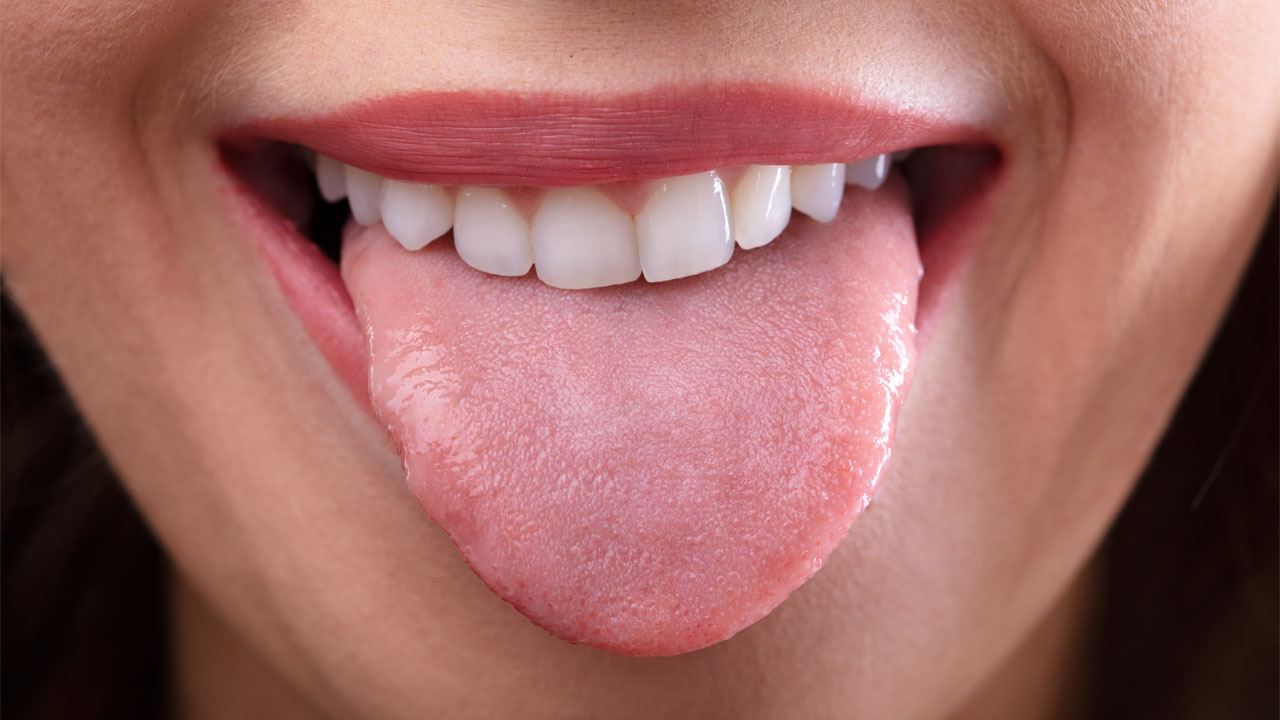
A healthy tongue is pink with small nodules called papillae on the surface that contain about 9,000 taste buds. A change in color, bumps, or patches can be an early indicator of an underlying health condition such as oral cancer.
Different colors and shapes provide important insight into your wellbeing, which is why your doctor looks at your tongue at the beginning of an exam.
Get into the habit of sticking out your tongue while looking in the mirror so you can identify a change in color or any abnormalities. Learn what signs to look for and what they mean for your overall health.
Tongue Color
- Black can be a sign of diabetes, poor oral hygiene, tobacco use, and HIV
- Blue can mean you have a lack of oxygen caused by kidney disease, respiratory issues, or a blood disorder
- Gray indicates a digestive disorder
- Purple is a sign of poor circulation, heart problems, or blood stagnation
- Red means you have a fever or hormonal imbalance
- White if it is thick is a sign of oral thrush
- Yellow can indicate jaundice or a buildup of dead skin cells
Bumpy Tongue
A canker sore or papillitis may show up as bumps on or under your tongue and go away on their own, but sometimes the bumps can be cancerous.
Glossy, Smooth, Pale Tongue
A deficiency in B vitamins, folic acid, and iron can make your tongue appear glossy, smooth, or pale. It can also be a symptom of celiac disease, an infection, or be caused by medication.
Large Tongue
If your tongue feels larger than normal, this may be due to allergies, an infection, or hypothyroidism.
Scalloped Tongue
If your tongue is scalloped around the edges, it can be due to vitamin deficiency, sleep apnea, and low thyroid or hormone levels.
Strawberry Tongue
If your tongue looks enlarged and has bright red strawberry-like bumps, you may have strep throat or food or drug allergies.
You may have a vitamin B3 deficiency if the bumps are painful. A strawberry tongue can also be a symptom of scarlet fever.
Thin Tongue
If you notice your tongue is very thin or short, you may be dehydrated.
Webbed or Striped Tongue
This indicates you may have an inflammatory condition called lichen planus, caused by your immune system attacking the healthy cells in your body.
White Patches
White patches or discoloration can signify a fungal infection or leukoplakia, which is linked to cancer. The patches can appear lace-like, spotty, or hard and flat.
They can also be a sign of an overgrowth of yeast common in the elderly, newborns, pregnant women, and those taking antibiotics.
If your doctor has ruled out a medical cause for changes in the color, texture, or shape of your tongue, you can improve its appearance by gently brushing it or using a tongue scraper when you clean your teeth.
If you notice anything unusual that gives you cause for concern, schedule an appointment with our practice. We conduct routine oral cancer screenings during your preventative care dental exam so that you can have peace of mind.

